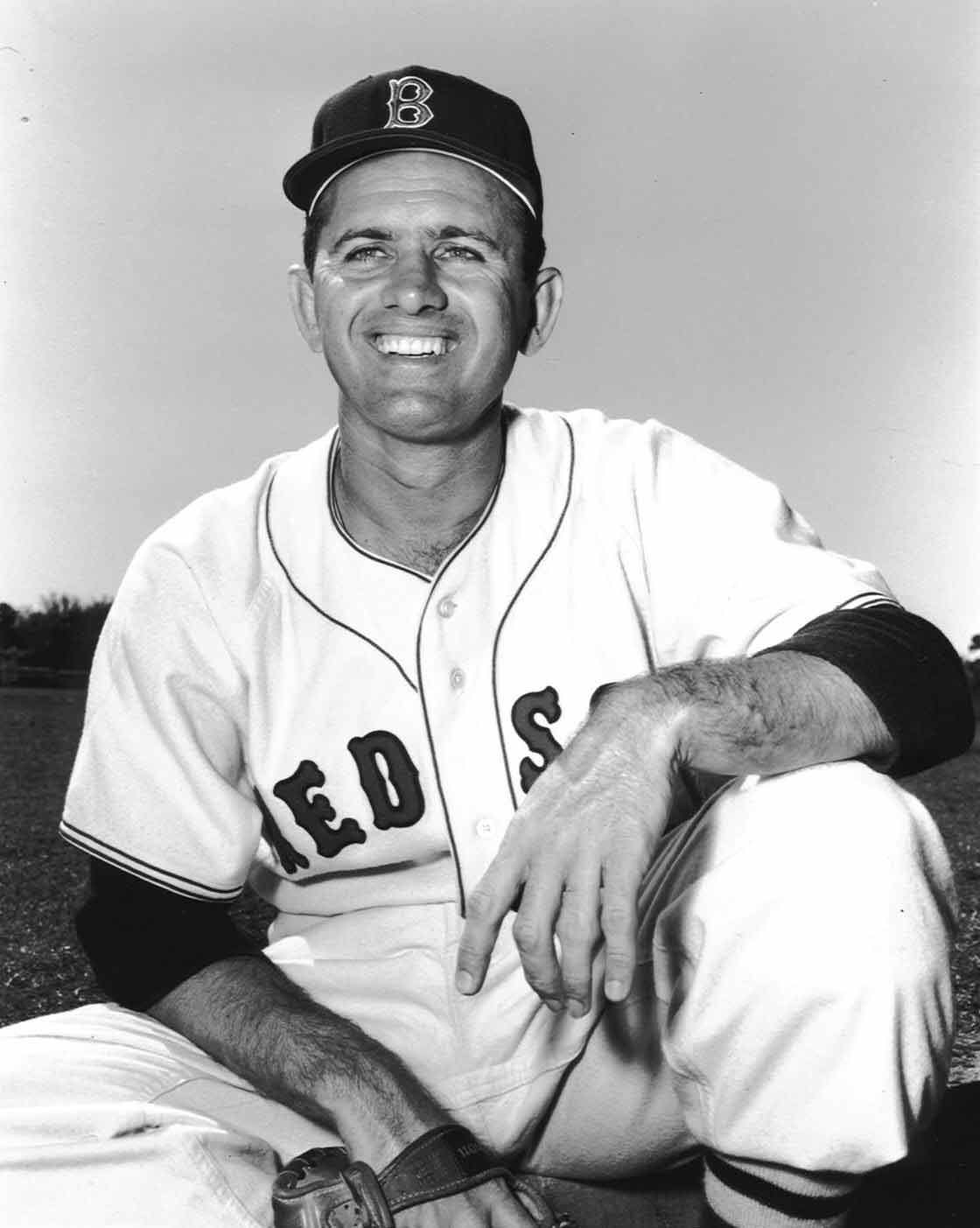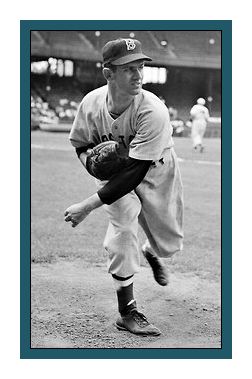|
“FENWAY'S BEST PLAYERS”  |
|||||
Mel Parnell devoted a full decade to the Boston Red Sox, from 1947 through 1956. He ranked first among left-handed Red Sox pitchers in wins, number of games started (232), and number of innings pitched (1,752 2/3). Mel was born on June 13, 1922. Growing up, he had the opportunity to play in a number of city parks. Fortunately, no one ever tried to “correct” his natural left-handedness, though he was originally a first baseman. His senior year in high school, when the team was short a pitcher, he was asked if he’d want to try pitching. He played in American Legion tournaments as well as for the Samuel J. Peters High School team. It was quite a strong team, and he was such a talent that he was asked to sign his first major-league contract before he’d even graduated. Mel had missed a couple of years of school due to illness and injuries, but it was just a short while before he turned 19 that he signed. He first played professional ball in 1941 for Centerville, Maryland, a Class D Eastern Shore League team with which the Red Sox had a working agreement. He was initially sent to Owensboro, Kentucky, another Class D club with a Red Sox affiliation. In Centerville, he posted an ERA of 4.13 and got his feet wet. After finishing up school and graduating in February 1942, he put in a full year with Canton. He had an excellent season and his ERA was a spectacular 1.59. World War II was, of course, looming at the time and the draft board had been in touch. Not wanting to be taken as a foot soldier, he enlisted in the Army Air Corps. Because he was good at baseball, he earned a pretty soft berth. He helped train pilots for combat, putting them through their paces with calisthenics and other physical education work and also did some maintenance work and other duties. After the war, like with many ball clubs, the Red Sox had so many players coming out of the service that they didn’t know where to send them all. Mel’s league-leading ERA was 1.30, and he finished the season with a 13-4 season for Scranton and earned himself a promotion to the big league club. In 1947, he trained with the Red Sox and found himself one of six pitchers vying to fill two slots on the staff. With the Red Sox, Mel struggled with a 6.35 ERA, two wins, and three losses. He got his first major league win in April in Detroit, throwing a complete-game four-hit, 7-1 win over the Tigers. He got a little more work, but was optioned to Louisville in July. He suffered a broken finger not long after arriving and figured in only four games, not that effectively. Come 1948, he really took off. Suddenly, he was a major-league pitcher who posted a 3.14 ERA and a 15-8 record. He fully expected to start for the Red Sox in the one-game playoff for the pennant, against the Indians. He got to the ball park the next morning, and as pitchers do during batting practice, he took his time getting dressed because there’s no hurry to get out on the field. Manager Joe McCarthy changed his mind and went with the right-hander instead of the lefthander today because the wind was blowing out. McCarthy tells Denny Galehouse that he’s the pitcher, and it was a shock to him. Galehouse got through the first three innings well enough, but imploded in the fourth, and the Red Sox managed only five hits, losing 8-3. Mel pitched even better in 1949, the year that was far and away his best. He won 25 games and lost only seven, with an ERA of 2.77. The 25 wins were one more than the previous Red Sox record by a left-handed pitcher, Babe Ruth’s 24 in 1917. It was built on a heavy workload, just shy of 300 innings. Like the year before, 1949 came right down to the very last day of the season. Mel pitched the first of the two games in New York, the Saturday game. The Red Sox had a 4-0 lead after three innings, but Joe DiMaggio’s ground-rule double started a two-run rally in the fourth, and three straight singles brought the Yankees to 4-3 and drove Parnell from the game. In 1950, the Red Sox scored a ton of runs and the team wound up in third place, four games out of first. Mel appeared in a career-high 40 games and had the best ERA of any Sox pitcher, 3.61 with an 18-10 record. In 1951, he was a very good 18-11 with a 3.26 ERA, but he really flattened out in 1952 (12-12, 3.62). The year started out well, but he was severely hampered by bursitis. His last really good season was 1953, when he posted a record of 21-8 with a 3.06 ERA. He appeared in only half as many games in 1954, though, when he was hit in the left arm. It hit him in the wrist and broke the ulna bone. That accident hastened the end of his career. Parnell’s record in 1954 was a very disappointing 3-7, though his ERA wasn’t all that bad at 3.70. He pitched only 46 innings in 1955, but rebounded a bit in 1956, his last year as a major-league pitcher, with a 3.77 ERA. On July 14th, that he threw a 4-0 no-hitter against the White Sox, the first Red Sox no-hitter since Howard Ehmke’s in 1923. Mel’s career ended with an elbow operation to try to fix a torn nerve. If the Tommy John surgery had been available to him at that time, he might have had as much as another four or five years in his career. After a couple of in-between years, the Red Sox asked him to manage a team in Alpine, Texas in 1961. He began broadcasting on television in 1965 and worked through a couple of lean years, but was on hand for 1967’s Impossible Dream season. Only Cy Young, Roger Clemens, and Tim Wakefield won more games for the Boston Red Sox than did Mel, who was voted into the Red Sox Hall of Fame in 1997. Mel Parnell, a New Orleans native, died on March 20, 2012, after a battle with cancer at 89.
|
|||||

